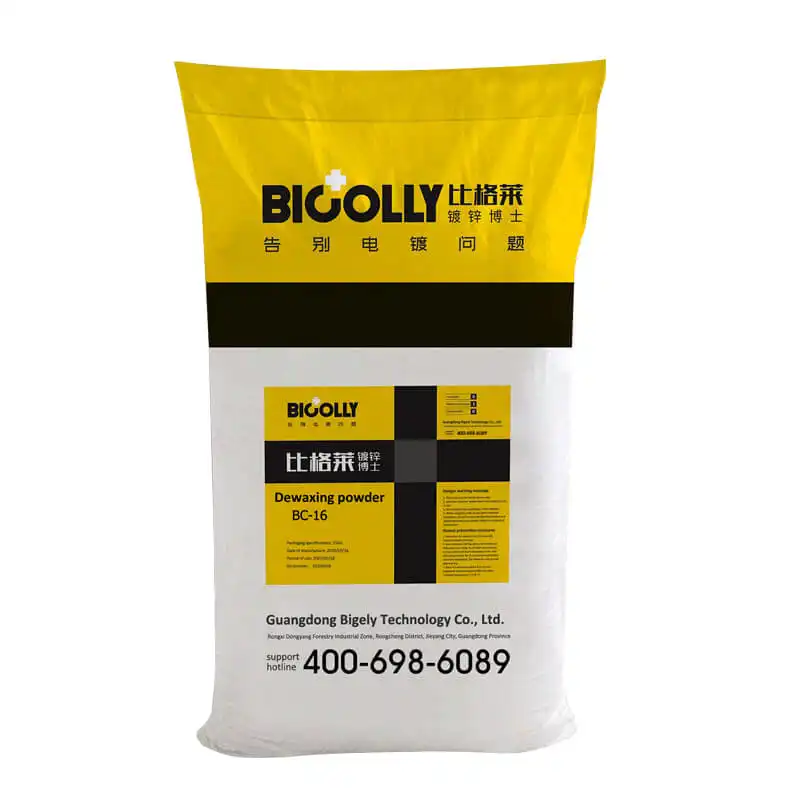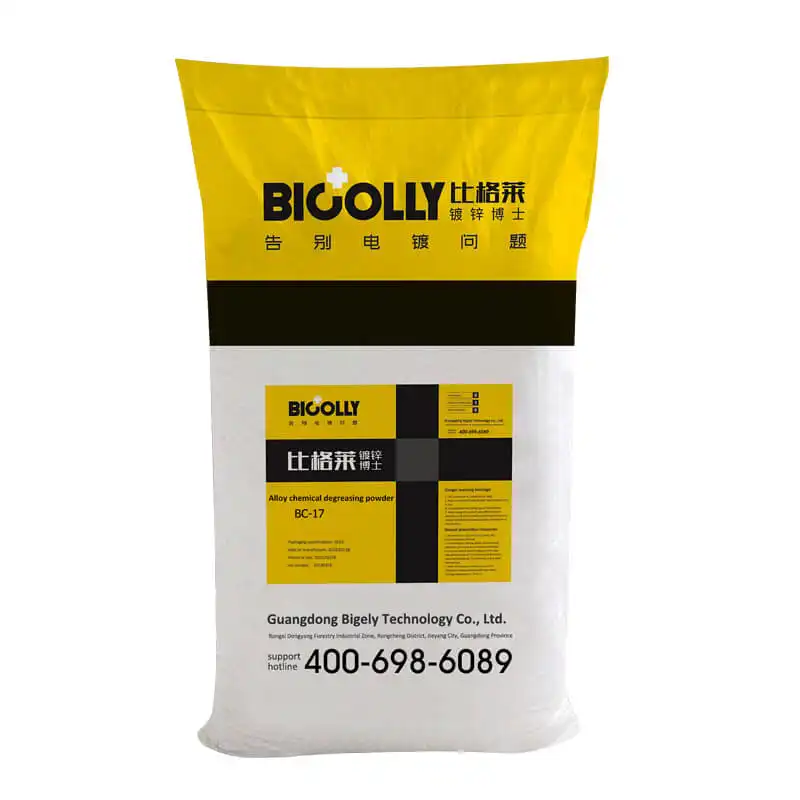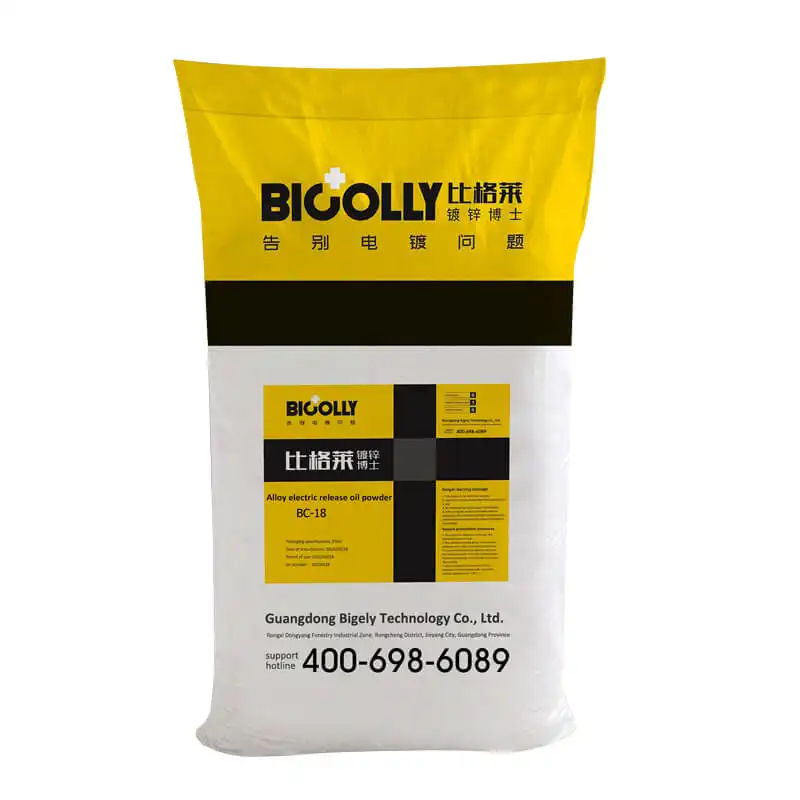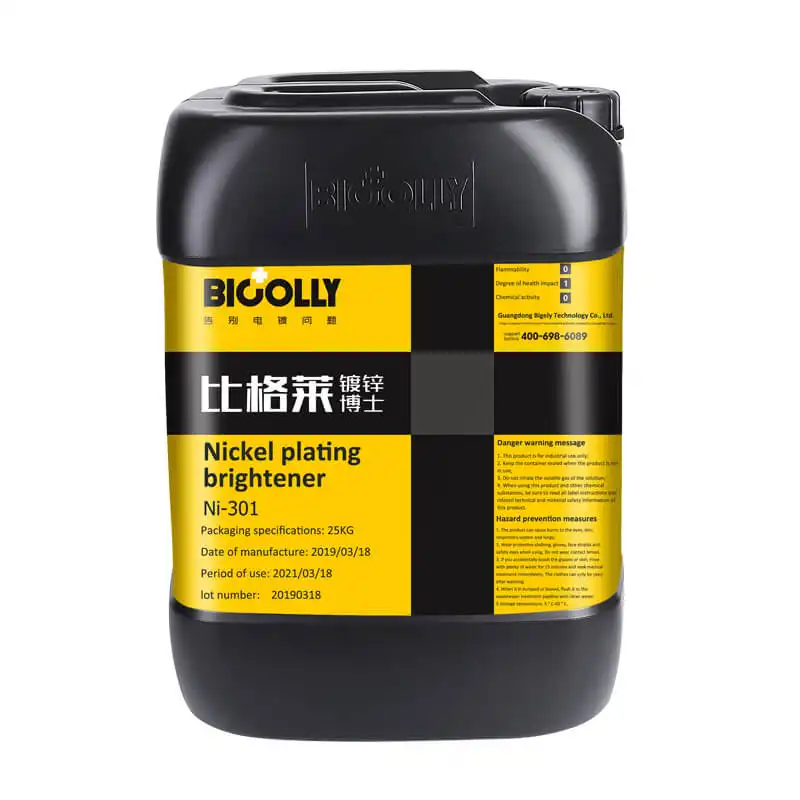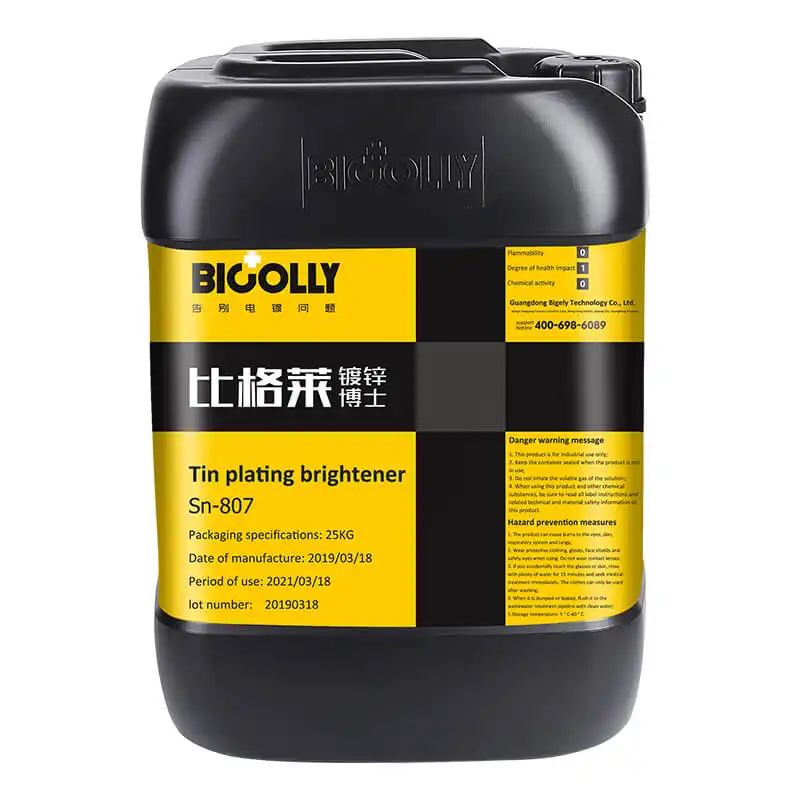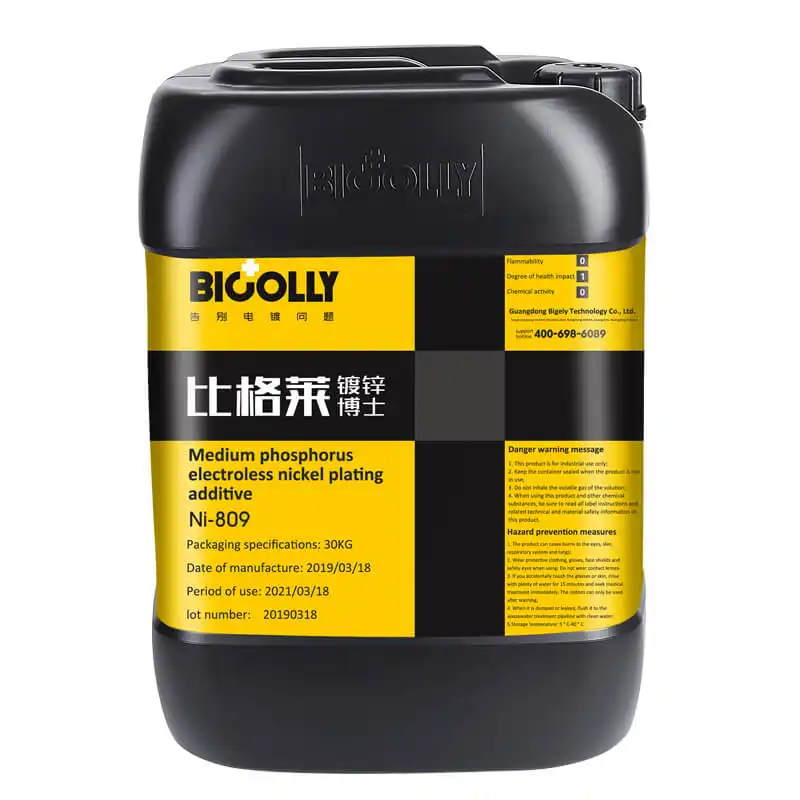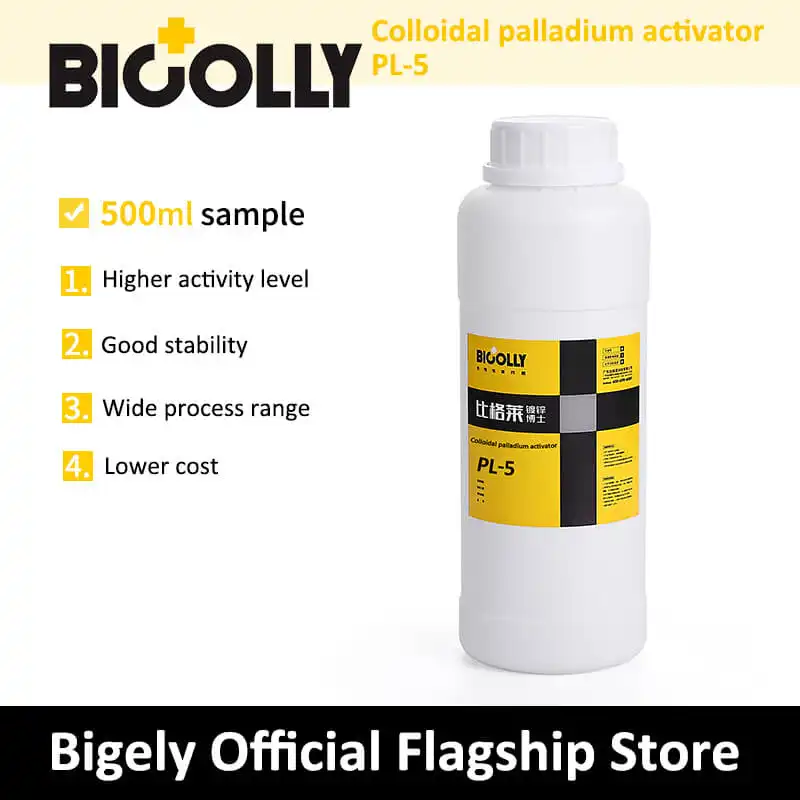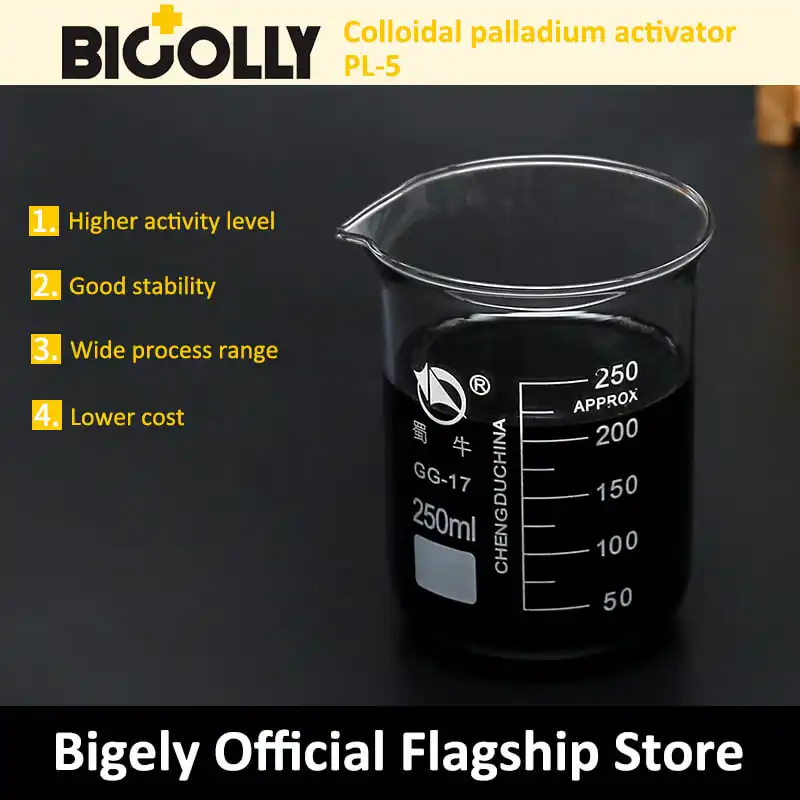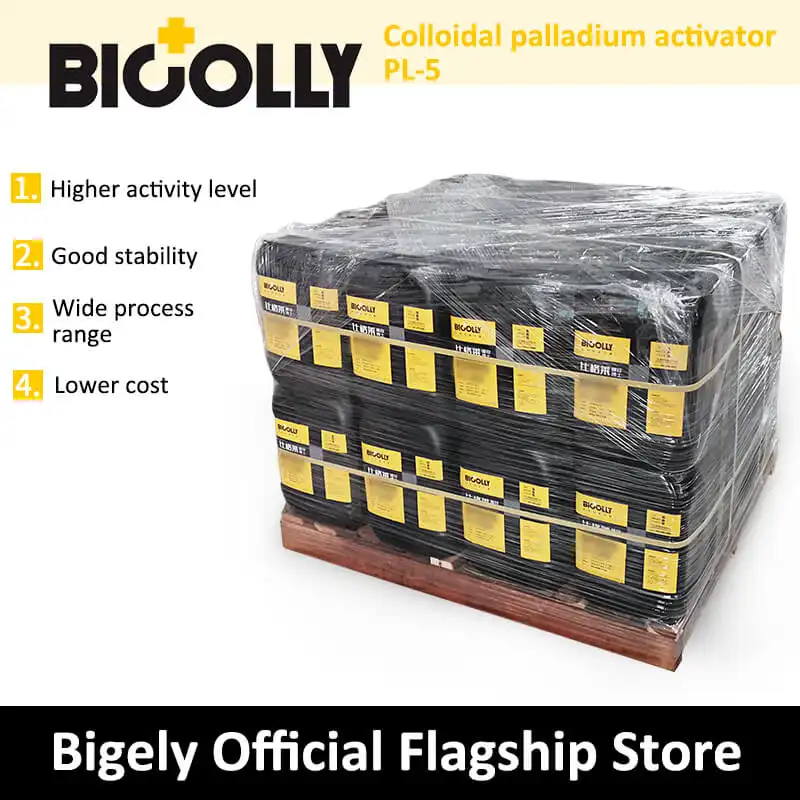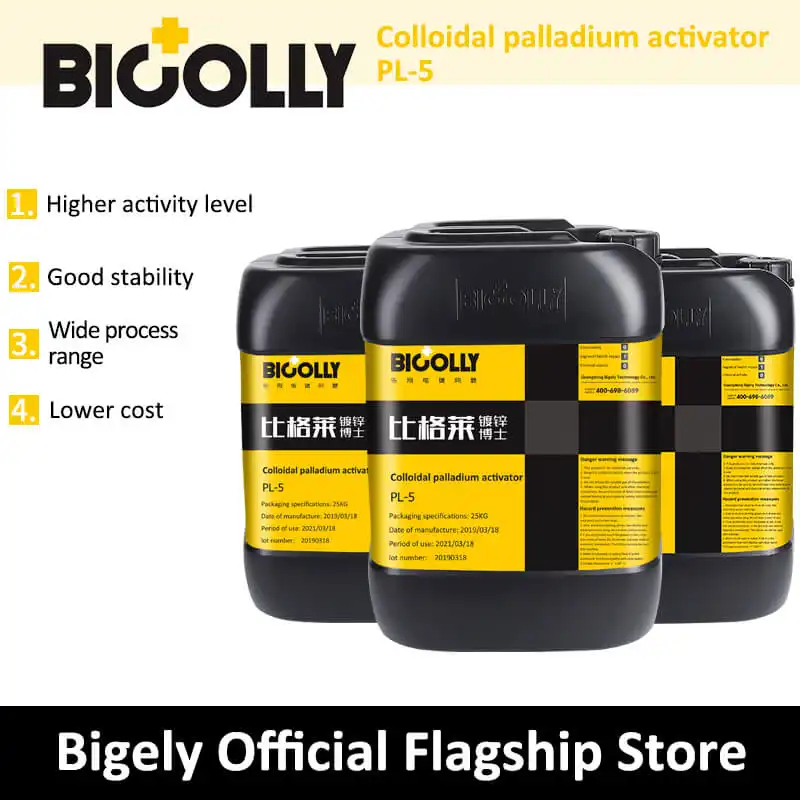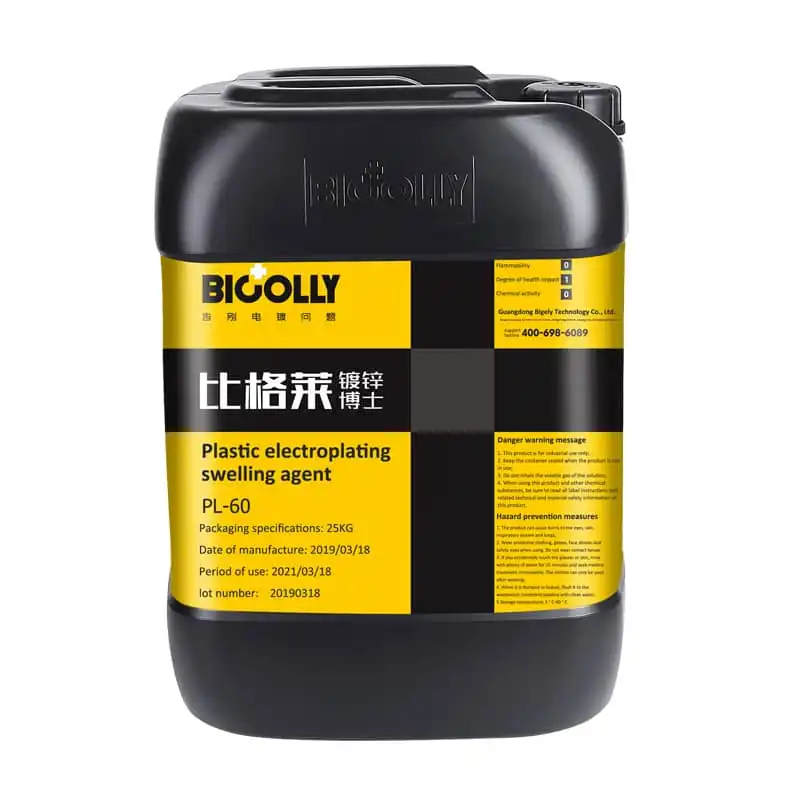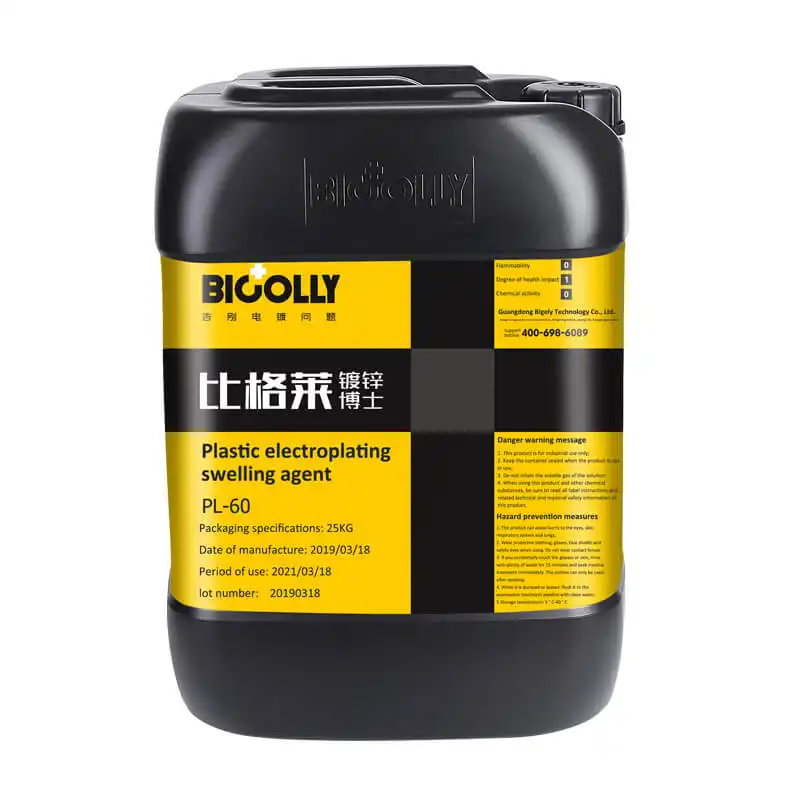Plastic electroplating palladium activator
Plastic electroplating colloidal palladium activation process (palladium water)
1. Overview
Palladium water is an acidic activator, mixed with hydrochloric acid . It is designed for plastic electroplating. This activator is very stable and has a long service life.
2. Operating conditions
|
Temperature |
20℃-35℃ |
|
time |
1 to 5 minutes |
|
concentration |
4-8 ml/liter |
|
Salt acid |
2 5 0-2 8 0ml /L |
|
Stir |
Required |
3.Equipment
|
Trough |
Polyvinyl chloride, polypropylene, high density polypropylene, glass or Pyrex glass |
|
Stir |
Stirring work or circulating tank liquid (with pump), do not use air to stir |
|
filter |
--- to be free to use the equipment polypropylene material |
|
Ventilation equipment |
Should be installed |
|
Heater |
Hot water sandwich type, quartz, Teflon |
4.Control and maintenance
Palladium water control range: 4-8 ml/liter
(A) preparation . 4 ml / l standard colorimetric working solution
Take 20 ml of analytically pure hydrochloric acid in 100 ml colorimetric tube was then added 0.4 mL of palladium water mixed volume to 100 ml , and shaken .
(B) formulated . 6 ml / l standard colorimetric working solution
Take 20 ml of analytically pure hydrochloric acid in 100 ml colorimetric tube was then added 0.6 mL of palladium water mixed volume to 100 ml , and shaken .
(C) formulation . 8 ml / l standard colorimetric working solution
Take 20 ml of analytically pure hydrochloric acid in 100 ml colorimetric tube was then added 0.8 mL of palladium water mixed volume to 100 ml , and shaken .
(D) Standard concentration detection
(1) directly take the tank liquid and pour it into the empty colorimetric tube to compare the color with the above standard colorimetric working solution.
(2) Compare the color with various standard solutions to judge the palladium water concentration of the working bath solution.
When necessary, add palladium water to maintain its concentration between 4-8 ml/liter.
Change the color standard liquid every week.
If you want to get more accurate results, you can use a spectrophotometer, colorimeter, etc.
Divalent tin Control range: 3.0-3.5 g/l
When necessary, add stannous chloride to maintain the divalent tin content in the working fluid between 3.0-3.5 g/l.
hydrochloric control range: 2 . 5 0-2 . 8 0 ml / l
Analytical method :
( 1 ) Use a pipette to draw 2 ml of bath liquid into a 250 ml Erlenmeyer flask.
( 2 ) Add about 50 ml of pure water.
( 3 ) Add phenolic phenol indicator.
( 4 ) In 0.2N sodium hydroxide solution titrated to a red end point .
Calculation : Hydrochloric acid (ml/L ) = 41.44 × sodium hydroxide consumption (ml) × sodium hydroxide concentration (N)
When necessary, add analytical pure hydrochloric acid to maintain the hydrochloric acid content in the working solution between 250-280 ml/l
Impurities
The tolerance of the bath liquid to impurity pollution is: Fe: <100ppm, Cr: <100ppm, nitrate and sulfur: <5ppm
Iron ions, nitrate and sulfur: Mainly derived from impure hydrochloric acid , which will cause degelling.
Chromium ion: Mainly comes from incomplete neutralization, which will lead to skip plating and abnormal consumption of divalent tin.
Note: When there is no impurity pollution, it does not need to be eliminated and can be used continuously, but when the plated parts fall, they must be picked up in time.
5.Troubleshooting
|
Bad problem |
the reason |
Countermeasure |
|
Rough or pitted plating |
1. bath suspended solids . 2.The divalent tin is too low . 3. Poor washing . |
1. Circulating filtration of bath liquid . 2. Increase the divalent tin to 3.0-3.5g/L. 3. Increase the overflow flow of washing, increase the spray washing
|
|
Plating on hanger
|
Overactivation |
Reduce concentration or temperature and time. |
|
Missing plating
|
Insufficient activation |
Increase temperature or concentration, time. |
|
Poor binding
|
Insufficient activation |
Increase temperature and concentration. |
 Products
Products